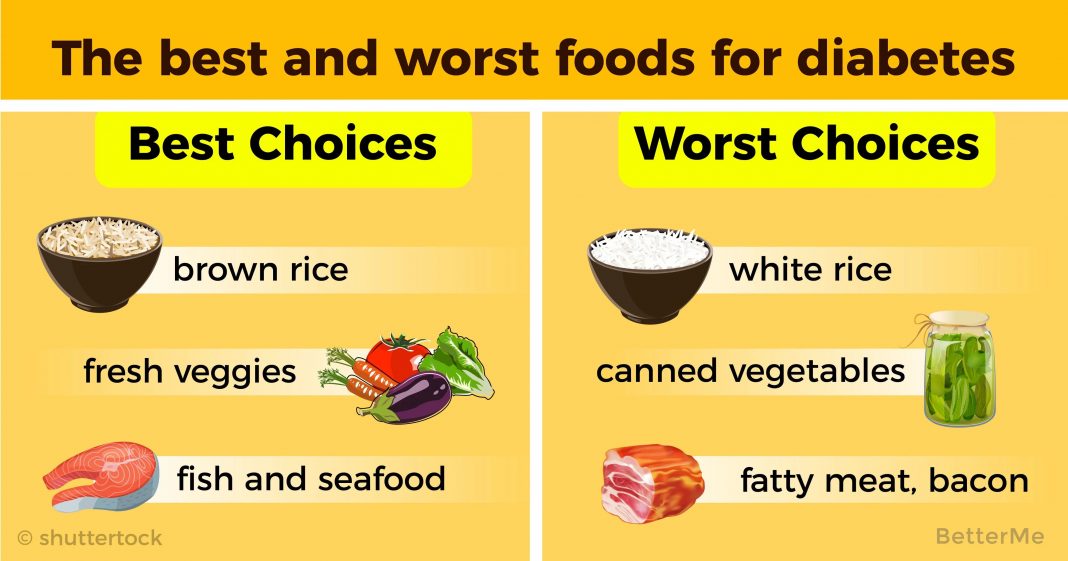Chocolate, pasta, or sausage are some of the worst foods for people with diabetes, because in addition to being rich in simple carbohydrates that increase blood sugar, they do not contain other nutrients that help regulate the amount of glucose in the blood.
In diabetics, consumption of these foods can be serious because glucose, which is the main source of energy that cells need to work, is not absorbed and continues to accumulate in the blood because insulin is not effective or not present in sufficient quantities and it is responsible for capturing the glucose, placing it inside the cells.
Although they are more dangerous for those who have diabetes, these foods can also be avoided by all people, because, in this way, it is possible to reduce the risk of developing diabetes and other chronic diseases, especially cardiovascular ones, over time.
Below is a list of the 5 worst types of food for people with diabetes, as well as healthier exchanges:
1. Sweets
As candy, chocolate, pudding or mousse contain a lot of sugar, being a good source of quick energy for most people, but in case of diabetes, as this energy does not reach the cells and is only accumulated in the blood, it can arise complications.
Healthy Exchange: Opt for unpeeled fruit and pomace as dessert or diet sweets in small quantities, at most twice a week.
2. Simple carbohydrates
Simple carbohydrates like rice, pasta, and potatoes are converted to blood sugar, so it’s the same as eating candy, with no whole source at the same time.
Healthy Exchange: Always opt for rice and wholegrain pasta because they are beneficial because they have less sugar and, consequently, a lower glycemic index. See diabetes pasta recipe.
3. Processed meats
Like bacon, salami, sausage, sausage and mortadella that are made with red meat and food additives, which have toxic chemicals to the body, favoring the onset of diabetes. Sodium nitrate and nitrosamines are the two main substances present in these foods that cause damage to the pancreas, which over time stops working properly.
The habitual consumption of processed meat, especially ham, also leads to increased inflammation in the body and increased oxidative stress, which are factors that also predispose to the disease.
Healthy Exchange: Opt for a slice of unsalted white cheese.
4. Packet snacks
Biscuits and packaged snacks such as potato chips, doritos and fandangos contain food additives and sodium that are also not recommended for people with diabetes because they increase the risk of hypertension. In diabetics there is a change in blood vessels that facilitates the accumulation of fatty plaques inside, increasing the risk of cardiovascular disease and when consuming this type of food, this risk increases even more.
Healthy Exchange: Opt for snacks prepared at home, baked sweet potato chips.
5. alcoholic beverages
Beer and caipirinha are also bad choices because beer dehydrates and increases the concentration of sugar in the blood and caipirinha, in addition to being made with a sugar cane derivative, also contains more sugar, being totally inadvisable in the case of diabetes.
Healthy Exchange: Opt for 1 glass of red wine eventually, because it contains resveratrol which benefits the cardiovascular system.
In diabetics, consumption of these foods can be serious because glucose, which is the main source of energy that cells need to work, is not absorbed and continues to accumulate in the blood because insulin is not effective or not present in sufficient quantities and it is responsible for capturing the glucose, placing it inside the cells.
Because diabetics need to eat well
Diabetics need to eat well, avoiding anything that can be turned into blood sugar because they don’t have enough insulin to get all the glucose (blood sugar) into their cells and that’s why you need to be so careful with what you eat. , because practically anything can turn into sugar in the blood and this will accumulate, lacking energy for the cells to work.
So, to control diabetes and ensure that all the glucose gets into the cells, you need to:
- Decrease the amount of sugar that reaches the blood and
- Ensuring that the existing insulin is really efficient in its job of getting the sugar into the cells.
This can be achieved through proper nutrition and the use of medications such as insulin, in case of type 1 diabetes, or metformin, in case of type 2 diabetes, for example.
But it’s no use eating badly, thinking that the drugs will be enough to guarantee the entry of glucose into the cells because this is a daily adjustment and the amount of insulin needed to take the sugar that an apple took to the blood is not the same needed to take the sugar that a brigadeiro provided.
